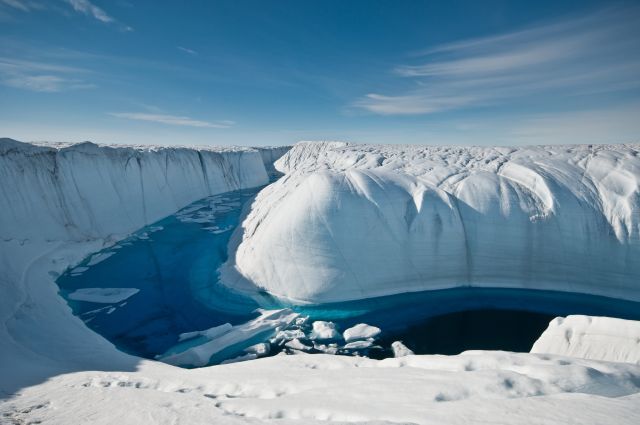Clearest satellite evidence yet of polar ice losses
Measuring global warming

In a landmark study, published in the journal Science, the researchers show that melting of the Antarctic and Greenland ice sheets has contributed 11.1 millimetres to global sea levels since 1992. This amounts to one fifth of all sea level rise over the survey period. About two thirds of the ice loss was from Greenland, and the remainder was from Antarctica.
Although the ice sheet losses fall within the range reported by the IPCC in 2007, the spread of the IPCC estimate was so broad that it was not clear whether Antarctica was growing or shrinking. The new estimates are a vast improvement (more than twice as accurate) thanks to the inclusion of more satellite data, and confirm that both Antarctica and Greenland are losing ice.
Rate of ice loss has accelerated
The study also shows that the combined rate of ice sheet melting has increased over time and, altogether, Greenland and Antarctica are now losing more than three times as much ice (equivalent to 0.95 mm of sea level rise per year) as they were in the 1990s (equivalent to 0.27 mm of sea level rise per year).
The experts also found differences in the pace of change at each pole. The rate of ice loss from Greenland has increased almost five-fold since the mid-1990s. In contrast, while the regional changes in Antarctic ice over time are sometimes quite high, the overall balance has remained fairly constant.
Clues from the earth’s gravitational field
Geodesist Dr. Martin Horwath from the Institute for Astronomical and Physical Geodesy at Technische Universität München (TUM) contributed some of the measurements underpinning these new insights. He measured variations in the earth’s gravitational pull, based on data delivered by a pair of satellites, to precisely track changes to the ice sheets. As the orbit traveled by the satellites shifts in response to even small variations in the earth’s gravitational pull, increases or decreases in the polar ice sheets over the course of a year will have an impact – albeit minimal – on the orbit.
Gravitational change is one of three observational methods applied for this study. The researchers were now able to reconcile the differences between dozens of earlier ice sheet studies through careful use of matching time periods and survey areas, and by combining measurements collected by different types of satellites.
Led by Professor Andrew Shepherd at the University of Leeds and Dr Erik Ivins at NASA’s Jet Propulsion Laboratory, the study combines observations from 10 different satellite missions to develop the first consistent measurement of polar ice sheet changes. The Ice Sheet Mass Balance Inter-comparison Exercise (IMBIE) is a collaboration between 47 researchers from 26 laboratories, and was supported by the European Space Agency (ESA) and the National Aeronautics and Space Administration (NASA).
Publication:
Andrew Shepherd et al: A reconciled estimate of ice sheet mass balance, Science, November 2012, doi: 10.1126/science.1228102.
Contact:
Dr. Martin Horwath / Prof. Roland Pail
Technische Universität München
Institut fuer Astronomische und Physikalische Geodaesie
Tel.: +49 (0)89 289 23196 / +49 (0)89 289 23190
E-Mail: martin.horwath@bv.tum.de / pail@bv.tum.de
Web: http://www.iapg.bv.tum.de/iapg.html
Technical University of Munich
Corporate Communications Center
- Undine Ziller / Esther Harward
- ziller@zv.tum.de
- presse@tum.de
- Teamwebsite